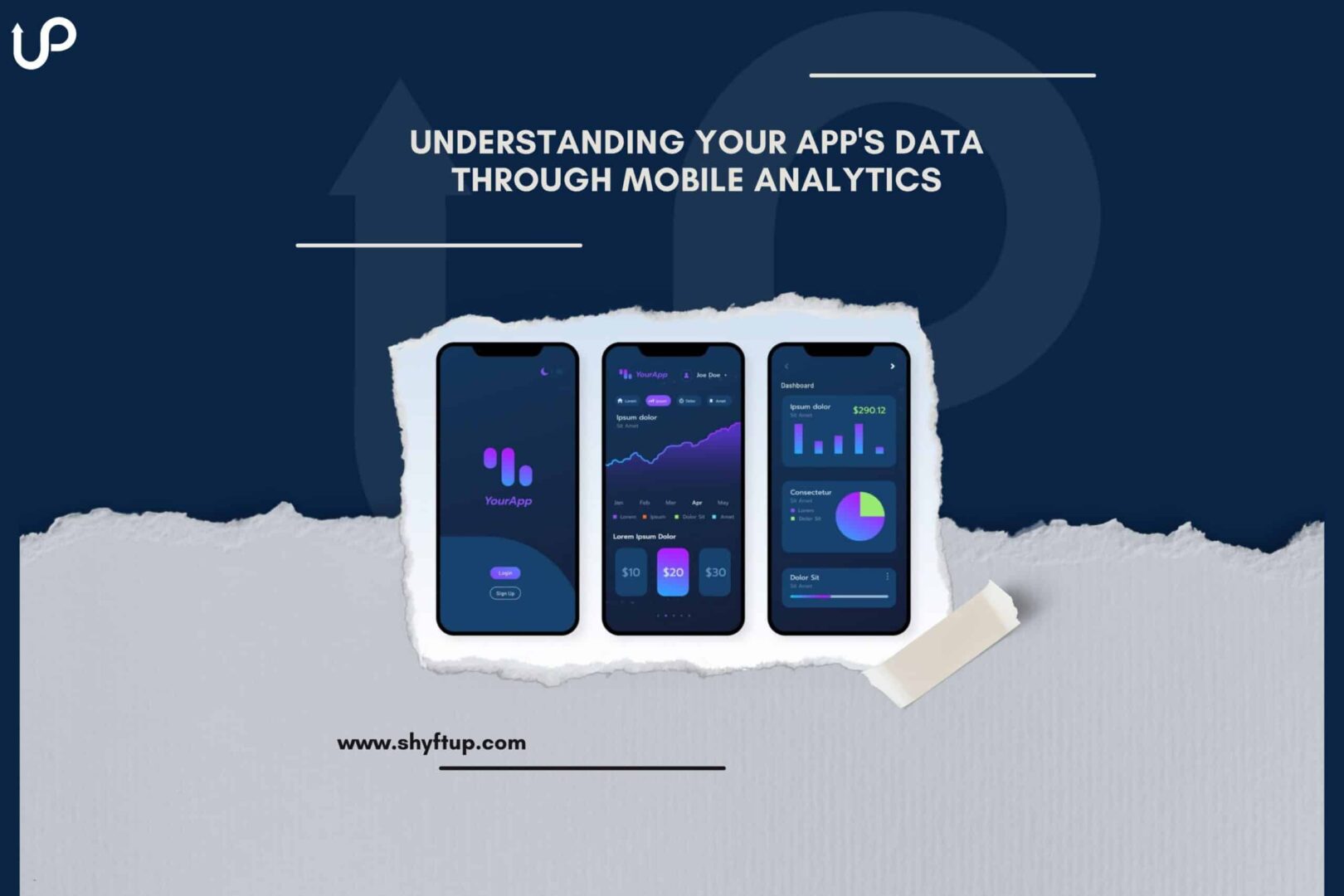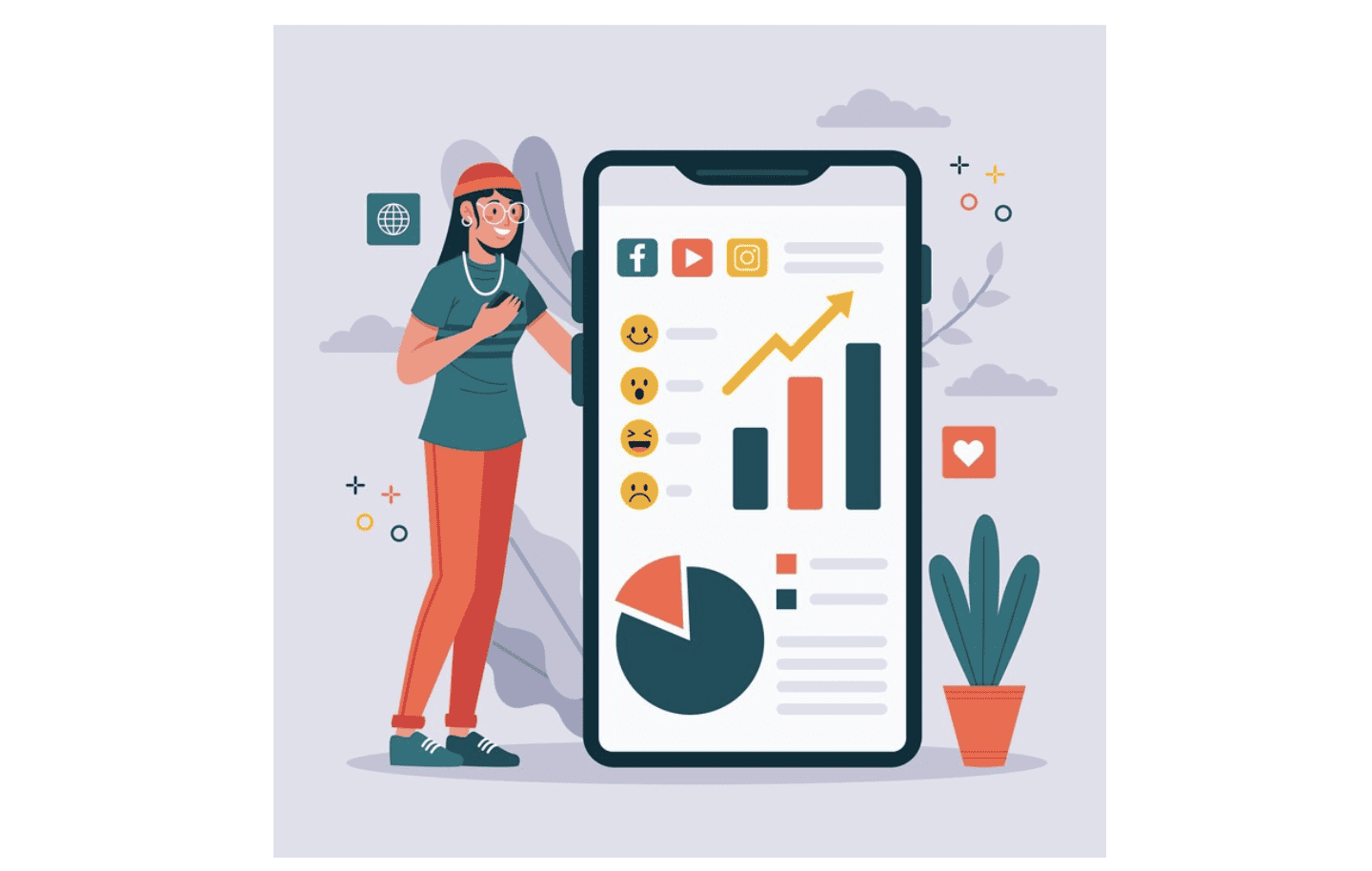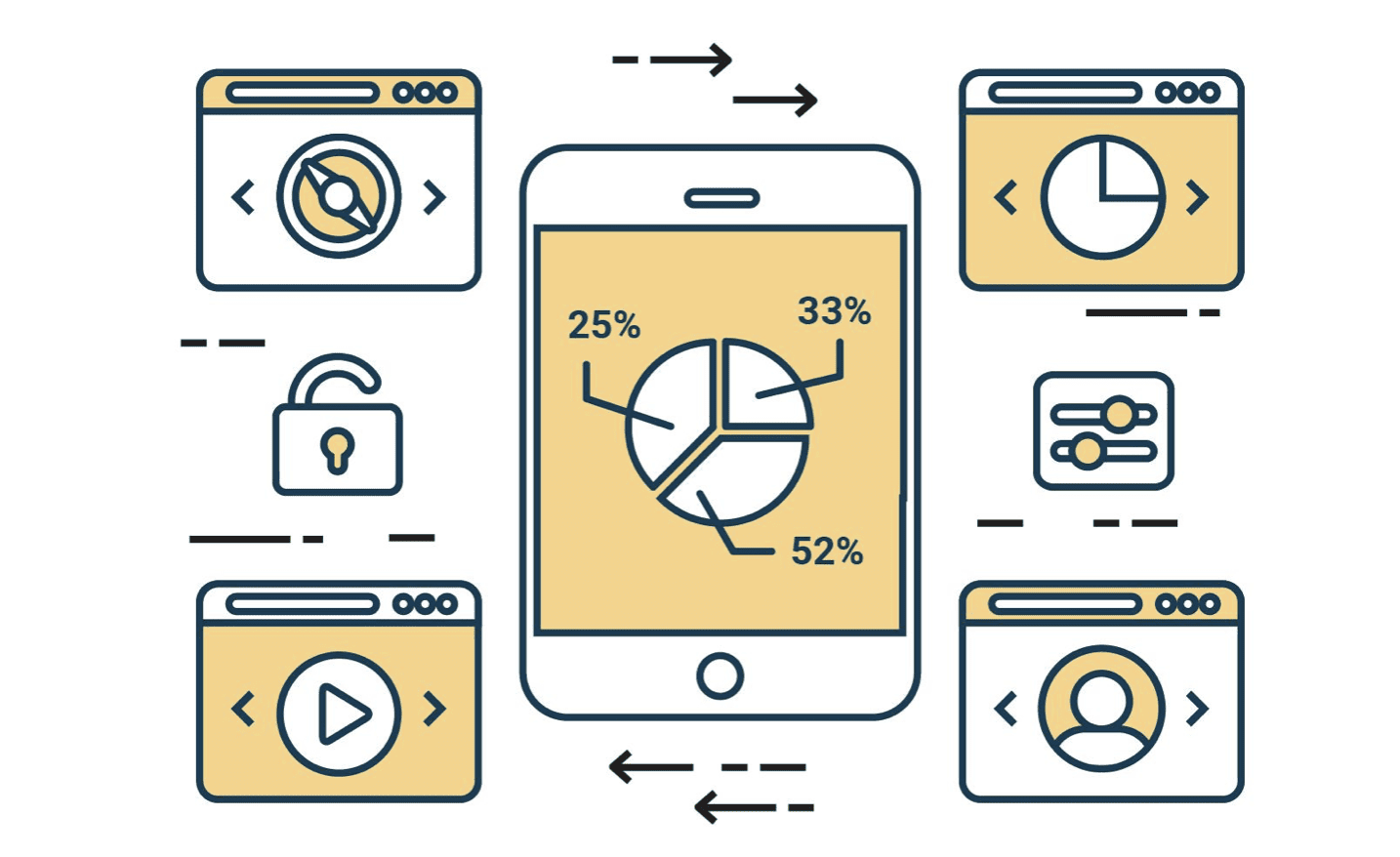
Understanding Your App’s Data Through Mobile Analytics
In the highly competitive landscape of mobile applications, success hinges on the availability and utilization of pertinent data. Acquiring insights into your target audience and comprehending the performance of your app can be the differentiating factor between triumph and failure. Fortunately, the era of uncertainty is over, thanks to the advent of mobile analytics.
Mobile analytics serves as a formidable tool, granting app developers and business owners the ability to make informed, data-driven decisions. With this powerful resource at your disposal, understanding the intricacies of user behavior, app performance, and market trends becomes not only feasible but essential.
In this blog, you will learn what mobile analytics are, its benefits, the key metrics it measures, and how you can use mobile analytics to understand your app’s data.
What is Mobile Analytics?
Mobile analytics is the process of gathering, measuring, analyzing, and evaluating data generated by mobile analytics tools such as Google Analytics for Mobile Apps, Adobe Analytics, and Firebase.
The goal of mobile analytics is to gain insights into user behavior, app performance, and other key metrics to make informed decisions that can improve the user experience, enhance app functionality, and optimize overall performance.
What are the Benefits of Mobile Analytics?
Mobile app analytics offers numerous benefits to app developers, businesses, and marketers. Here are some of the key advantages:
- User Behavior Insights: Analytics provides valuable insights into how users interact with the app. This includes user journeys, feature usage, and navigation patterns, helping developers understand user behavior.
- Performance Optimization: App analytics tools monitor performance metrics such as load times, crashes, and errors. This information allows developers to identify and address issues, optimizing the app for a better user experience.
- Enhanced User Experience: Understanding user behavior and preferences enables developers to tailor the app’s features and design to meet user expectations, ultimately improving the overall user experience.
- Effective Marketing Strategies: Analytics helps businesses track user acquisition channels, measure the effectiveness of marketing campaigns, and allocate resources to the most successful channels for better ROI.
- Monetization Optimization: For apps with revenue-generating strategies, analytics aids in tracking and optimizing monetization efforts. It provides insights into user spending patterns, ad performance, and other revenue-related metrics.
- Data-Driven Decision-Making: Mobile app analytics enables informed decision-making based on data rather than assumptions. This leads to more effective strategies, improvements, and optimizations in app development and marketing.
- App Store Optimization (ASO): Monitoring user feedback, reviews, and ratings on app stores provides insights into user satisfaction and helps in making improvements. Positive app store reviews can contribute to higher app rankings.
Mobile app analytics empowers businesses to make data-driven decisions, improve app performance, enhance user experiences, and maximize the overall success of mobile applications in a competitive market. It is an invaluable tool for understanding user behavior and driving continuous improvement.
What are the Key Metrics Measured by Mobile Analytics?
Mobile app analytics play a major role in improving the performance of your mobile app. These are achieved through measuring a variety of key metrics that provide insights into different aspects of app performance and user behavior.
The specific metrics tracked may vary depending on the goals and nature of the mobile app as well as the tools you are using. Nevertheless, here are some common key metrics measured by mobile analytics:
- Installations/Downloads: The number of times the app has been installed or downloaded by users.
- Active Users: The number of users who actively engage with the app within a specific time period.
- User Retention: The percentage of users who continue to use the app over time. It helps measure user loyalty and the effectiveness of retention strategies.
- Session Duration: The average amount of time users spend in a single session within the app.
- Frequency of Use: How often users open and use the app. This metric helps gauge user engagement and loyalty.
- User Acquisition Channels: Identifying and analyzing the sources that bring users to the app, such as organic search, paid advertising, or referrals.
- Conversion Rate: The percentage of users who complete a specific action or goal within the app, such as making a purchase or signing up for a service.
- Average Revenue Per User (ARPU): The average amount of revenue generated per user over a specific period. This is particularly relevant for apps with monetization strategies.
- In-App Purchases: Revenue generated through purchases made within the app, such as virtual goods or premium features.
- Ad Performance: For apps that display advertisements, metrics such as click-through rate (CTR), impressions, and revenue generated from ads are important.
- Crash Reports: The number and frequency of app crashes, helping developers identify and fix bugs and stability issues.
- App Load Time: The time it takes for the app to load and become functional. Slow load times can negatively impact user experience.
- User Feedback and Ratings: Monitoring user reviews, ratings, and feedback on app stores to assess user satisfaction and identify areas for improvement.
- Geographic Location: Analyzing where users are located can inform marketing strategies and localization efforts.
- Device and OS Versions: Understanding the devices and operating system versions users are using helps in optimizing the app for different platforms.
- Screen Flow and Navigation Patterns: Analyzing how users move through the app, which screens they visit, and where they drop off provides insights into user behavior.
- Push Notification Effectiveness: Tracking the impact of push notifications on user engagement and retention.
- Social Sharing Metrics: If applicable, metrics related to social sharing, such as the number of shares or referrals generated through social media.
- Churn Rate: The percentage of users who stop using the app over a specific period. High churn rates may indicate issues with user satisfaction or app functionality.
- Time in App: The total amount of time users spend in the app over a specific period.
These metrics collectively provide a comprehensive view of how users interact with the app, how well it is performing, and how successful it is in achieving its goals, whether they be user engagement, revenue generation, or other key objectives. Analyzing these metrics helps app developers and businesses make informed decisions to enhance the overall app experience.
How to Understand App’s Data Through Mobile Analytics
Understanding app data based on mobile analytics involves a systematic analysis of various metrics to derive meaningful insights. Here are steps you can take to make sense of the data provided by mobile analytics:
1. Define Your Goals
Clearly outline your objectives and key performance indicators (KPIs). What are you trying to achieve with your app? Whether it’s increasing user engagement, boosting revenue, or improving user retention, having clear goals will guide your analysis.
2. Choose Relevant Metrics
Select the metrics that align with your goals. For example, if user engagement is a priority, focus on metrics like session duration, frequency of use, and user retention. If monetization is crucial, look at metrics related to in-app purchases, average revenue per user (ARPU), and conversion rates.
3. Segment Your Users
Use segmentation to break down your user base into groups based on various criteria (e.g., demographics, location, behavior). This allows you to identify patterns and understand how different user segments interact with your app.
4. Analyze User Acquisition
Examine the sources of user acquisition to understand which channels bring in the most users. Evaluate the effectiveness of marketing campaigns and adjust your strategies based on the data.
5. Review User Engagement Metrics
Analyze metrics related to user engagement, such as session duration, frequency of use, and screen flow. Identify popular features and areas where users may be dropping off. Use this information to optimize the user experience.
6. Evaluate Retention Rates
Examine user retention rates over time to understand how well your app retains users. Identify points in the user journey where retention drops and consider making improvements to those areas.
7. Monitor Conversion Rates
If your app has specific conversion goals (e.g., making a purchase or signing up), closely monitor conversion rates. Identify bottlenecks in the conversion funnel and optimize the user flow.
8. Assess Monetization Metrics
For apps focused on generating revenue, analyze metrics related to in-app purchases, subscription renewals, and advertising performance. Understand which monetization strategies are most effective.
9. Investigate Feedback and Ratings
Pay attention to user reviews, ratings, and feedback on app stores. Address negative feedback and consider positive feedback as validation for your app’s strengths.
10. Examine App Performance Metrics
Review technical metrics such as app load times, crash reports, and error rates. Identify and address issues that may affect the app’s performance and stability.
11. Utilize A/B Testing
Implement A/B testing to experiment with different features, designs, or user experiences. Analyze the results to determine which variations perform better and iterate based on insights.
12. Stay Informed About Market Trends
Keep an eye on industry trends and benchmark your app’s performance against competitors. This can provide context for your analytics data and help you identify areas for improvement.
13. Iterate and Optimize
Use the insights gained from your analysis to make informed decisions. Continuously iterate and optimize your app based on the data to enhance user satisfaction and achieve your goals.
14. Document and Share Findings
Document your findings and share insights with relevant stakeholders. Effective communication of analytics data helps align teams and guide future development and marketing strategies.
By following these steps, you can gain a deeper understanding of your app’s performance, user behavior, and overall effectiveness. Mobile analytics provides a wealth of data, and interpreting it strategically is key to making informed decisions that positively impact your app’s success.
Make Data-Driven Decisions Now
Mobile analytics give you the important details and information to make the right business decisions for your app. To truly take advantage of mobile analytics, you should partner with ShyftUp. They have the necessary tools and expertise to help you gather and interpret data to make the best decision for your app.
Give ShyftUp a try and schedule a demo today!
What are the Benefits of Mobile Analytics?
What are the Key Metrics Measured by Mobile Analytics?
How to Understand App’s Data Through Mobile Analytics
5. Review User Engagement Metrics
8. Assess Monetization Metrics
9. Investigate Feedback and Ratings
10. Examine App Performance Metrics
12. Stay Informed About Market Trends


